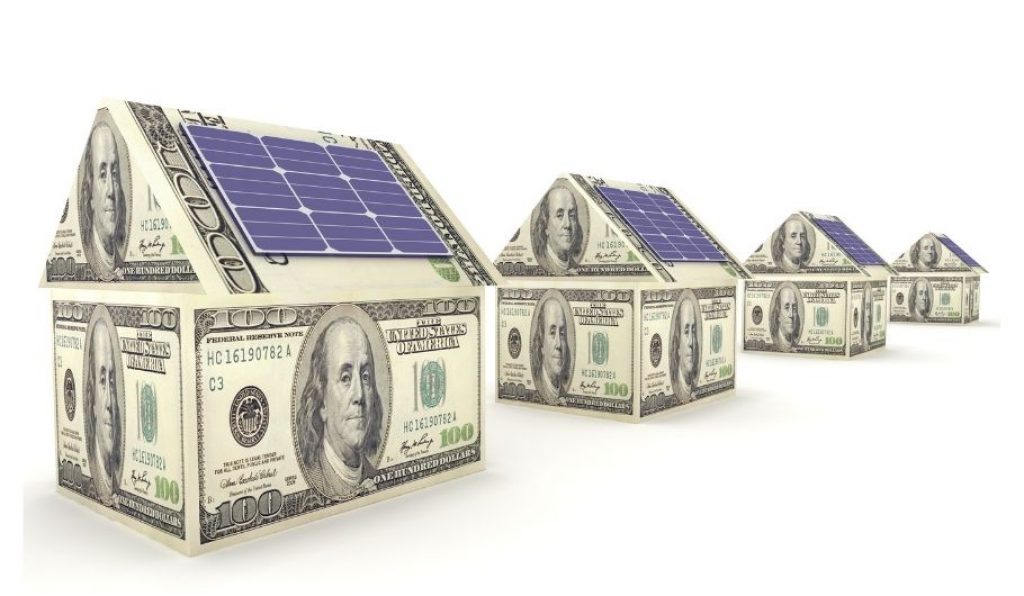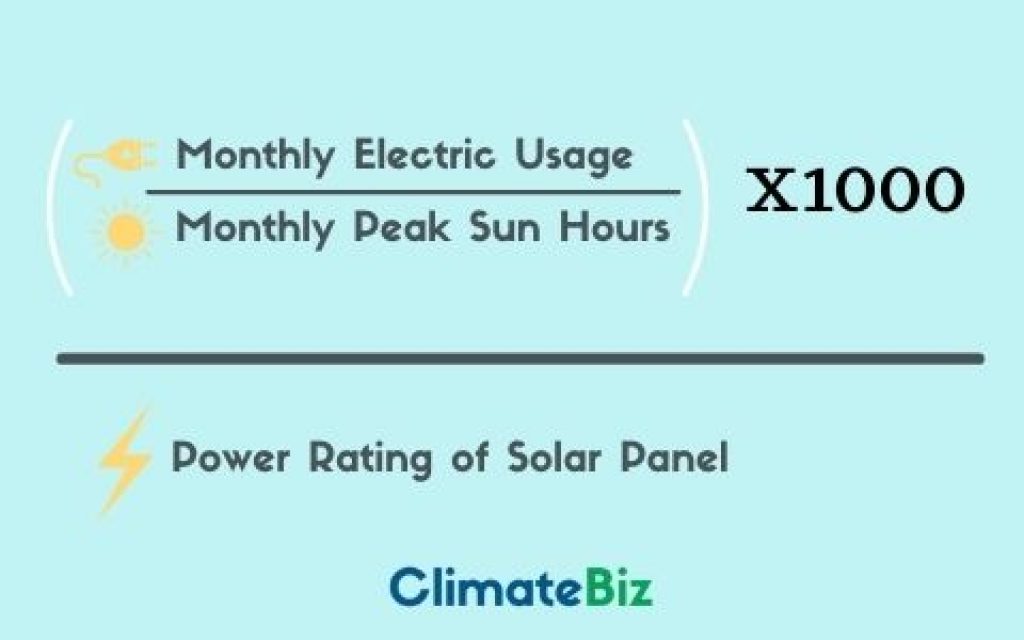Do solar panels save money? We at Climatebiz have noticed that this is one of the most frequently asked questions.
And it comes as no surprise. With any sizeable investment, you want to know if your money is well spent.
The answer to this question is actually not that straightforward. In fact, many variables come into play when establishing the ROI of your potential solar panel investment.
For starters, where do you live? Does your area receive lots of sunlight, or is it mostly overcast?
Those are some of the questions that need answering in order to figure out the savings that solar panels can bring you.
When conducting our research, we found that the majority of articles covering the topic seem to be somewhat vague. They include no real-world examples of people who actually use solar panels and they neglected to mention the importance of location.
In this article, we’ll discuss how much money solar panels save on average, based on the country you live in.
If you have any questions regarding your solar panel purchase, please feel free to reach out via the comments section at the bottom of the article.
We make sure to respond with real-time advice to everyone.
Table of Contents
Do Solar Panels Save Money?
The total amount of money saved depends on your average annual electricity consumption and the geographic location of your home. In most parts of the United States, once your solar panels have recouped the initial investment, you can expect to save around $1385.88 a year.
Now, how did we come about that figure?
It’s a fair question, and again a somewhat rough average based on the overall annual electricity consumption for a U.S. residential utility customer.
You see, solar panels only start saving you money once they have essentially spared you from paying your electricity bill for the equivalent of your original solar panel investment.
In order for you to better understand this, we thought it best to teach you our exact method of determining how much money solar panels will save you. This is based on where you live and how much electricity you consume.
How Do Solar Panels Save Money?
If you use electricity and your home is connected to the grid, there is a very high chance that you get hit with an electricity bill by your utility each month.
Now, how much that bill comes up to is based on 2 things:
- How much electricity you consume.
- Which state your home is based in.
Regardless of the above, you are pretty much guaranteed to pay a certain amount each month.
Why Do We Pay For Electricity?
Put simply, it costs money to both produce electricity and transport it to consumers. The amount you end up paying is a combination of both these factors.
Essentially, you are paying for the extraction/burning of coal at a power plant and for the ongoing maintenance costs.
How Do Solar Panels Offset These Costs?
When you install solar panels on your home, you are no longer relying on the utilities to generate electricity and maintain their power stations for you.
As of now, you are producing and maintaining your own electricity production via the sun’s unlimited energy supply.
The great thing about solar is that there is little in the way of maintenance costs. In fact, all you need to do is clean your panels.
Other than that, your panels should last between 25 to 30 years.
The only costs you need to consider are the initial installation/product costs. That is the buying of solar equipment and getting it installed.
Once you have done this, you will generate free electricity each month. Meaning whatever you were previously paying for your utilities each month, can now be saved.
How Do I Calculate My Solar Savings?

To work out the amount saved is easy. If you install a solar system with the purpose of offsetting your electricity consumption by 100%, then your solar panels will save you the amount of money you currently spend each month on electricity.
- If you live in the US, that will be about $115.49 every month, on average (of course it varies state to state).
Remember, your electricity usage will shift based on the season, so for an accurate aggregate use your annual electricity consumption to figure out the amount you will save.
How To Work Out Your Total Solar Savings?
Now, this is a much more complex calculation.
Your total solar savings will depend on the number of solar panels you need.
In order to figure this out, you need:
- Your areas peak monthly sun hours.
- Annual electricity consumption.
Below we will take you through the process of sizing a solar system, step-by-step.
Step 1 – Figure Out Your Monthly Electricity Consumption
Although we will use your monthly consumption for our calculation, it is recommended that you use the entire year’s average. This is important because seasons change and in winter you will inherently use more electricity than in summer. Getting the overall average will ensure a much more accurate solar system size.
For our example, let’s assume your annual electricity consumption is 10,664 kWh at 13.01 cents per kWh.
Therefore, your yearly expenditure is $1385,88.
Divide your yearly kWh usage by 12 (1 year) and you get your monthly electricity consumption: 888kWh.
We will continue using your monthly kWh usage in our calculation.
Step 2 – Work Out How Much Peak Sun Hours Your Home Gets
This is perhaps the hardest part to figure out. Where exactly do you get this information from and what does It even mean?
Well, a peak sun hour equates to 1 hour in which the sun’s solar irradiance (sunlight) produces an average of 1000W (energy) per square meter (roughly 10.5 feet). In other words: 1 peak sun hour = 1000 W/m² of sunlight per hour.
- Knowing the amount of peak sun hours your home gets is critical in figuring out how much you will need to invest in your solar panels.
If you do not live in the United States, getting this information can prove quite difficult. Fortunately, we have begun building a database of every country/cities peak sunlight hours.
So far we have covered the following countries:
If you live in one of these countries you can use our database to figure out your area’s peak sunlight hours.
For our example, we will assume you live in California.
On average, California experiences about 5.2 peak hours of sunlight every day. Once you have your peak daily sunlight hours, multiply it by 31 days to get your monthly average.
5.2 x 31 = 161,2 peak sun hours.
Step 3 – Decide On What Solar Brand You Will Install
For this example, we install First Solar panels at 400 watts each. This brand costs $2.53 per watt.
Step 4 – Apply This Formula

So our calculation will look like the following:
888kWh ÷ 161,2 = 5.5 x 1000 = 5500 watts.
5500 watts ÷ 400 watts = 13,75 (We will round this off to 14)
Therefore, you will need to install 14, 400-watt solar panels from First Solar in order to offset your electricity consumption.
$2.53 x 5500 watts = $13,915 minus 26% solar tax rebates = $10,297.
Based on our calculation, a 5.5kW (5500 watts) solar system will cost us $10,297.
Next, we need to divide our solar system cost by our monthly electricity expenditure in order to learn how long it will take our solar panels to pay for themselves.
$10,297 ÷ $115,49 = 89 months.
89 months = 7.4 years.
Therefore, it will take your 5.5kW solar system 7.4 years to pay for itself. Which leaves you with 23 years of free electricity.
That amounts to $31,875 solar savings over a course of 23 years.
How Much Can Solar Panels Reduce Your Carbon Footprint?

The below formula can be used to calculate how various green practices can be used to offset/reduce carbon emissions.
Below we will feature a table that converts solar energy production into greenhouse gas offsets using the metric converters 7.44 × 10-4 metric tons CO2 / kilowatt-hour of energy produced and the national average for solar panel production ratio, 1.42 kilowatt-hours/watt of power.
| System Size (kW) | Annual Solar Energy Production (kWh) | Carbon Emission Reductions Per Year (Metric Tons) | Miles Driven By Average Passenger Vehicle | Number of Smartphones Charged | Tree Seedlings Grown For 10 Years |
|---|---|---|---|---|---|
| 2 | 2840 | 2.1 | 5058 | 244,825 | 33.3 |
| 3 | 4260 | 3.2 | 7587 | 367,238 | 49.9 |
| 4 | 5680 | 4.2 | 10,116 | 489,650 | 66.6 |
| 5 | 7100 | 5.3 | 12,646 | 612,063 | 83.2 |
| 6 | 8520 | 6.3 | 15,175 | 734,475 | 99.8 |
| 7 | 9940 | 7.4 | 17,704 | 856,888 | 116 |
| 8 | 11,360 | 8.5 | 20,233 | 979,300 | 133 |
| 10 | 14,200 | 10.6 | 25,291 | 1,224,125 | 166 |
| 12 | 17,040 | 12.7 | 30,349 | 1,468,950 | 200 |
| 15 | 21,300 | 15.8 | 37,937 | 1,836,188 | 250 |

